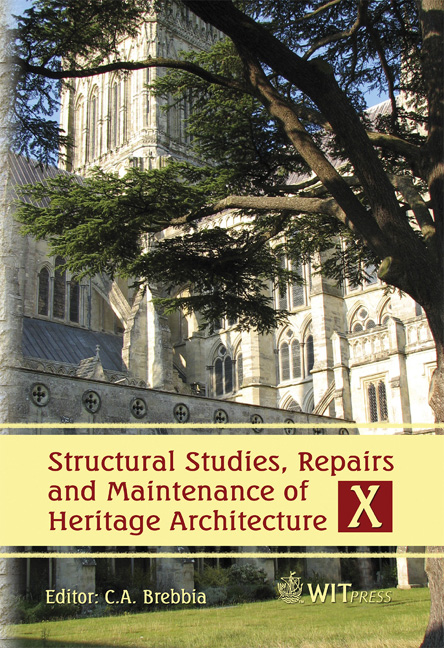Earthquake Resistance Of A Historical Brick Building In Akita Prefecture, Japan
Price
Free (open access)
Transaction
Volume
95
Pages
9
Published
2007
Size
1,196 kb
Paper DOI
10.2495/STR070651
Copyright
WIT Press
Author(s)
C. Cuadra, K. Tokeshi, M. B. Karkee & Y. Sakaida
Abstract
During the Meiji period (by the end of the 19th century) many brick masonry buildings were constructed in Japan. However, due to the lack of reinforcement these structures collapsed during the great Kanto earthquake, which occurred in the year 1923. Since then, this type of structure is not used for buildings and only a few historical constructions remain from that era. In Akita Prefecture, in the northeastern part of Japan, some of these buildings have been declared as local culture heritages. One of them is located in Ani village and was constructed in 1879 to serve as the residence for a German engineer who was working for a local mining company. As an initial step to evaluate the seismic vulnerability of this historical building, dynamic characterization has been undertaken. For that purpose, measurements of the micro vibration of the building was planned and undertaken by the authors. For the analytical modeling, mechanical parameters were estimated from a series of laboratory tests on masonry brick units obtained from the stock that are conserved near the building under study. The results of the microtremor measurements are discussed in relation to the analytical procedure adopted to estimate the dynamic characteristics of this historical brick structure. The structure shows intricate modes of vibration that are reflected in the multiple peaks observed in the transfer functions of microtremor records. With the analytical simulation considering only the effect of the brick walls, the multiple predominant frequencies are obtained for a certain range. With this good agreement of the analytical procedure and the measurement results, the reliability of the employed methodology was verified. Keywords: masonry building, dynamic behaviour, microtremor measurements, finite element method, mode analysis.
Keywords
masonry building, dynamic behaviour, microtremor measurements, finite element method, mode analysis.




